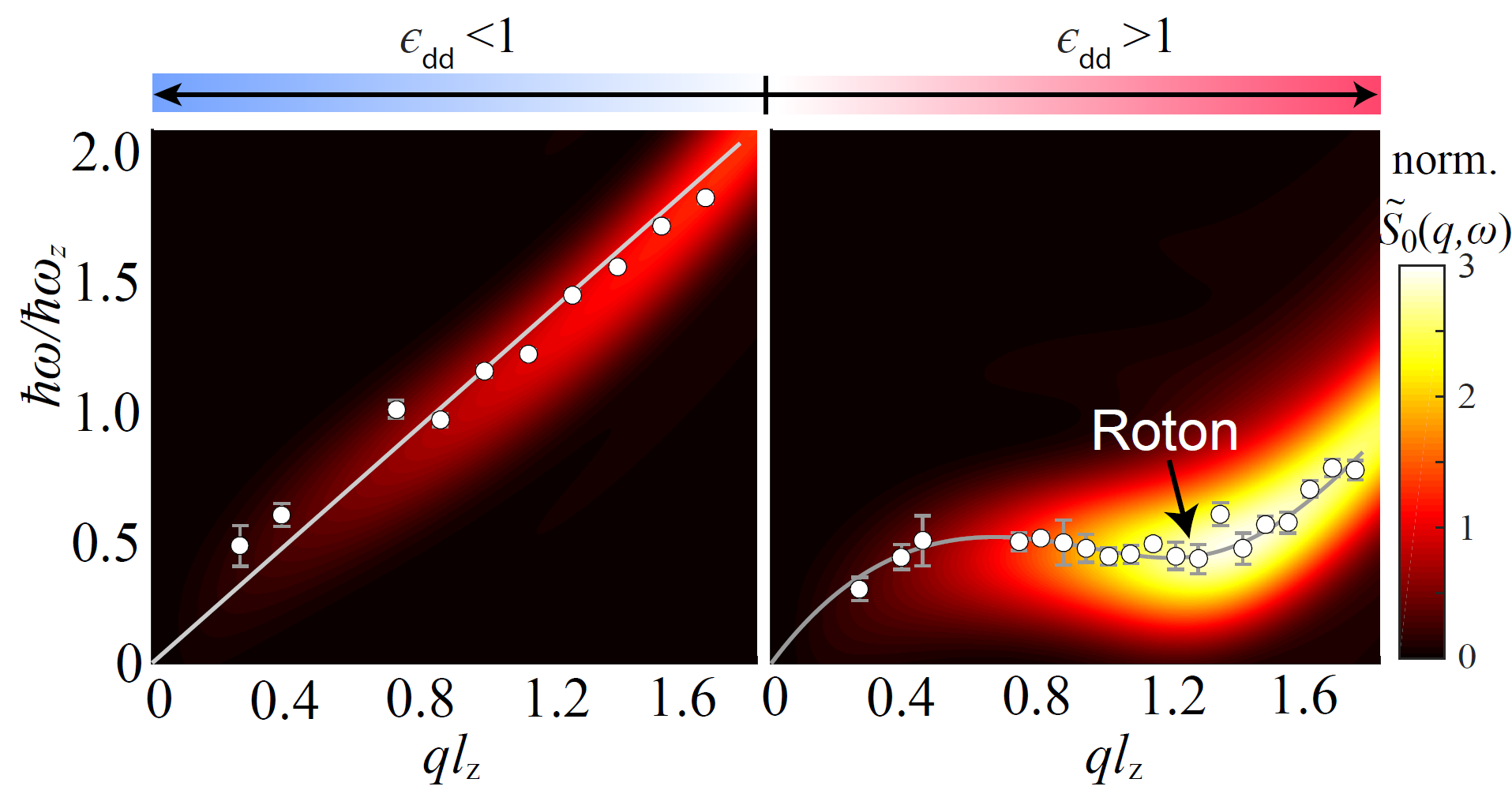Now in Physical Review Letter!
In quantum physics, the spectrum of elementary excitations dictates the way a quantum system behaves and reacts to perturbations. Hence, in superfluids, the possibility of frictionless flow is encoded in their excitation spectrum. At the same time as he formulated this idea, 80 years ago, Landau also foresaw that a peculiar kind of excitation – the roton – plays a crucial role in superfluid helium, as later confirmed in experiments. Remarkably, although absent in most gases, a roton mode was predicted to occur in quantum gases with strong dipole-dipole interactions, but long remained elusive to observation. Here, we report on measurements of the textbook fingerprint of a roton in a stable Bose-Einstein condensate of erbium atoms, namely the presence of a local minimum at a finite wavelength in its excitation spectrum. By tuning the interactions between the atoms, we find that the roton’s excitation energy sharply decreases before vanishing while the density fluctuations at the roton’s wavelength are strongly enhanced. The observed behavior pinpoints the system’s tendency to crystallize at a specific wavelength and establishes the roton as a precursor of a possible supersolid order, as recently observed in groundbreaking experiments (see https://phys.org/news/2019-04-teams-independently-dipolar-quantum-gasses.html).

